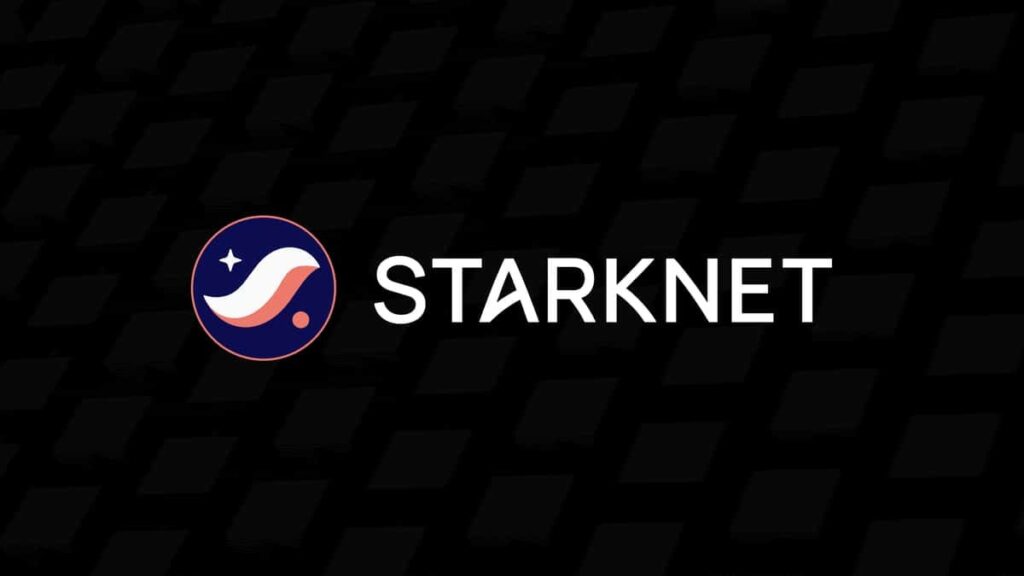Imagine you’re managing trades across multiple exchanges, monitoring market conditions, and making split-second decisions. Doing this manually is almost impossible, and that’s where trading bots come in. Starknet (STRK) trading bots offer a solution, automating the trading process for users interested in maximizing their efficiency. Starknet is one of the layer 2 scaling solutions for Ethereum, allowing for high-speed, low-cost transactions, making it an ideal environment for bots. Trading bots designed for Starknet can help users perform a wide range of trading activities with minimal manual intervention, making them invaluable tools for traders.
As the complexity of decentralized finance (DeFi) grows, more traders are going to use automated solutions to stay ahead in the market. Starknet (STRK) bots are tailored to Starknet’s unique ecosystem, and they provide an efficient, fast, and secure way to engage in the crypto markets. Follow Argoox to see how these bots work and why they are so advantageous.
What is the Role of Starknet (STRK) Trading Bot?
A Starknet (STRK) trading bot is an automated software program that is designed to execute trades based on predefined strategies within the Starknet ecosystem. Its main role is to assist traders by reducing the need for constant monitoring, providing precise trade execution, and eliminating human emotions from decision-making. These bots can handle multiple trades simultaneously and monitor market trends 24/7, allowing users to seize trading opportunities as they arise.
Moreover, these bots leverage Starknet’s advanced technology to perform high-frequency trades at low transaction costs, offering traders an efficient way to participate in the market without worrying about gas fees or congestion on Ethereum’s main chain.
How Do STRK Trading Bots Work?
STRK trading bots integrate with the Starknet network and various cryptocurrency exchanges to place buy and sell orders. They follow pre-configured algorithms based on technical analysis, historical data, or user-defined strategies. The bot continuously analyzes price movements and other market indicators to decide whether to buy, sell, or hold quickly.
Most STRK trading bots are equipped with several key components:
- Market Data Analysis: The bot scans price trends, volumes, and other indicators to identify patterns or anomalies.
- Strategy Execution: Based on predefined rules, the bot decides when and how to execute a trade, optimizing for maximum returns or minimal risk.
- Risk Management: Bots can be programmed to apply risk controls, such as setting stop-loss orders or adjusting portfolio allocations to mitigate losses.
- Connectivity: The bot must interact with both Starknet protocols and various exchanges, ensuring smooth execution.
Benefits of Using Starknet (STRK) Trading Bots
Utilizing STRK trading bots offers several advantages:
- 24/7 Operation: Bots never sleep, allowing users to engage with the market at any time without missing opportunities.
- Reduced Emotional Bias: Bots follow logic and algorithms, preventing impulsive decision-making based on emotions.
- Faster Execution: Given the speed of Starknet, transactions are processed in seconds, minimizing slippage and delays.
- Increased Efficiency: Bots can handle multiple trades and strategies simultaneously, offering scalability that’s hard to achieve manually.
- Cost-Effective: With lower gas fees on Starknet, trading bots are more affordable to operate, particularly for high-frequency trading.
What are Best Practices for Running STRK Trading Bots?
To ensure optimal performance, consider these best practices when running a Starknet (STRK) trading bot:
- Test Strategies in a Simulated Environment: Before launching a bot, test your strategy in a sandbox to fine-tune performance without risking capital.
- Monitor Regularly: Even though bots can function autonomously, regular monitoring ensures they are working as intended and allows for quick adjustments if needed.
- Keep Your Bot Updated: Stay informed of protocol updates or changes in market conditions because they can affect your bot’s performance.
- Diversify Strategies: Relying on a single trading strategy can be risky. Incorporate a range of strategies to spread risk and maximize returns.
How to Make Starknet (STRK) Trading Bot with Code?
Building a Starknet (STRK) trading bot requires an understanding of blockchain development, trading strategies, and coding skills. Here, we prepared a step-by-step guide that will walk you through the process of creating your own Starknet trading bot.
Step 1: Setting Up Your Development Environment
Before you begin writing the code, you need to set up the right environment and tools.
- Install Python: Python is a widely used language for bot development, particularly for blockchain-related projects. Make sure you have Python installed.
- Install Required Libraries: You’ll need libraries to interact with the Starknet blockchain and exchanges. These include:
- Web3.py: A Python library that allows you to interact with Ethereum and Starknet.
- Starknet.py: The Starknet SDK for Python.
- Pandas, NumPy: These libraries are useful for data handling and analysis.
To install these libraries, run the following commands in your terminal:
pip install web3
pip install starknet.py
pip install pandas numpy- Create a Starknet Wallet: You will need a Starknet-compatible wallet to interact with the Starknet network. Argent and Metamask are commonly used. Once you’ve created a wallet, make sure it has funds (you can use faucets for test networks).
- Choose an Exchange: If your bot is going to trade on an exchange, ensure that the exchange supports Starknet (e.g., dYdX or Loopring). You will need API access from the exchange to execute trades programmatically.
Step 2: Designing Your Trading Strategy
A trading bot is only as good as its strategy. You need to decide on the logic that will dictate the bot’s buying and selling actions. A simple strategy could be:
- Buy when the price drops by 5% within a specific timeframe.
- Sell when the price increases by 7%.
Alternatively, you can use more advanced techniques, such as:
- Moving Averages: Buy or sell based on moving average crossovers.
- Relative Strength Index (RSI): Use RSI to determine overbought or oversold conditions.
- Volume and Market Sentiment Analysis: Use volume trends or market sentiment data to influence trade decisions.
Step 3: Writing the Code
Now that your environment is set up and you have a strategy in mind, let’s code the bot.
1- Connecting to Starknet
The first step is to connect to Starknet using the web3 and starknet.py libraries. Here’s an example code.
from web3 import Web3
from starknet_py.net.gateway_client import GatewayClient
# Connect to Starknet Testnet
starknet_client = GatewayClient("https://alpha4.starknet.io")
# Connect to Starknet Mainnet
starknet_mainnet = GatewayClient("https://starknet-mainnet.infura.io/v3/YOUR_INFURA_PROJECT_ID")
# Web3 connection (optional)
web3 = Web3(Web3.HTTPProvider("https://mainnet.infura.io/v3/YOUR_INFURA_PROJECT_ID"))
print(web3.isConnected())
In this code, you’re connecting to both Starknet and Web3, allowing you to interact with the Ethereum ecosystem. Replace “YOUR_INFURA_PROJECT_ID” with your actual Infura project ID, which is needed for Ethereum-based applications.
2- Fetching Market Data
To build a trading bot, you need to constantly pull price data from the exchange. Below is a basic example of fetching data from a Starknet-based exchange:
import requests
def get_market_data():
# Example API call to a Starknet supported exchange (e.g., dYdX)
url = "https://api.dydx.exchange/v3/markets"
response = requests.get(url)
data = response.json()
# Get the current price of STRK
strk_price = data['markets']['STRK-USD']['price']
return float(strk_price)
# Fetch and print current STRK price
current_price = get_market_data()
print(f"Current STRK Price: {current_price}")This script uses the requests library to call an API that fetches the current STRK price from an exchange (dYdX in this example).
3- Implementing the Trading Logic
Now that you can get the price data, the next step is implementing the trading strategy. Let’s build a simple strategy that buys when the price drops by 5% and sells when it increases by 7%.
previous_price = get_market_data() # Initial price
buy_threshold = 0.95 # Buy if price drops by 5%
sell_threshold = 1.07 # Sell if price rises by 7%
position = None # Track if we are holding STRK or not
def trading_strategy():
global previous_price, position
current_price = get_market_data()
if position is None:
# Check if we should buy
if current_price <= previous_price * buy_threshold:
print("Buying STRK at", current_price)
position = "bought" # Mark position as bought
execute_trade('buy', current_price)
elif position == "bought":
# Check if we should sell
if current_price >= previous_price * sell_threshold:
print("Selling STRK at", current_price)
position = None # Reset position after selling
execute_trade('sell', current_price)
# Update previous price for next cycle
previous_price = current_price
In this example:
- The bot buys STRK when the price drops by 5% from the previous price.
- It sells STRK when the price increases by 7%.
- The bot tracks its position (whether it’s holding STRK or not) and executes trades accordingly.
4- Executing Trades
Once the bot decides to buy or sell, you need to place an order on the exchange. Here’s how to execute a trade using the exchange’s API.
def execute_trade(action, price):
if action == 'buy':
print(f"Placing a buy order for STRK at {price}")
# Code to place buy order
# Send request to exchange API to buy STRK
elif action == 'sell':
print(f"Placing a sell order for STRK at {price}")
# Code to place sell order
# Send request to exchange API to sell STRK5- Running the Bot Continuously
To keep the bot running and monitoring the market, you can set it to run in a loop with delays between each cycle.
import time
while True:
trading_strategy() # Run the strategy
time.sleep(60) # Wait for 60 seconds before the next checkThis loop will run the trading strategy every 60 seconds, ensuring the bot constantly checks the market and adjusts trades accordingly.
Step 4: Testing and Backtesting
Before deploying your bot on the live network, it’s crucial to backtest the strategy using historical data. The Pandas Library can simulate trades based on historical price movements.
import pandas as pd
# Load historical price data into a DataFrame
price_data = pd.read_csv("historical_strk_data.csv")
# Backtest the trading strategy with the historical data
for index, row in price_data.iterrows():
current_price = row['Price']
# Simulate the trading strategy logic here with historical pricesStep 5: Deploying the Bot
Once you’ve thoroughly tested your bot and are satisfied with its implementation, you can deploy it on the live Starknet network. Keep in mind the following:
- Ensure that you have enough STRK tokens in your wallet to cover gas fees and trades.
- Regularly monitor the bot for any potential issues or anomalies during live trading.
Step 6: Monitoring and Maintenance
Running a trading bot is not a set-it-and-forget-it process. After deployment, monitor its performance to ensure it is executing trades as expected. You can also:
- Set up notifications by email or SMS for critical events, such as when the bot makes a trade or detects a major price movement.
- Periodically review and adjust the trading strategy based on market conditions.
Tools, Libraries, and Technologies Used
To build a Starknet (STRK) trading bot, you’ll need several key tools:
- Python & Web3.js: These are widely used programming languages and libraries for interacting with blockchain protocols.
- Starknet SDK: The development kit necessary for building applications on Starknet.
- API Access to Exchanges: Ensure you have access to Starknet-supported exchanges like dYdX or Loopring.
What are Key Features to Consider in Making a Starknet (STRK) Trading Bot?
- Security: Ensure the bot uses secure APIs and protects your wallet’s private keys.
- Customization: Flexibility to adapt trading strategies according to market conditions.
- Real-time Monitoring: The ability to track market data and adjust trades accordingly.
- Automation & Alerts: Enable automatic trading and set alerts for important market changes.
What are Different Types of Starknet (STRK) Trading Bots?
- Arbitrage Bots: Bots that exploit price differences across different exchanges.
- Market-Making Bots: These bots place buy and sell orders to make profits from the spread between them.
- Trend-Following Bots: Bots that follow market trends and make trades accordingly.
- Scalping Bots: Designed for high-frequency trades in short time intervals to profit from small price movements.
Disadvantages of Using Starknet (STRK) Trading Bots
While STRK trading bots offer many benefits, they also have downsides:
- Over-reliance on Algorithms: Bots lack human intuition and can fail in unpredictable market conditions.
- Technical Failures: Bots can malfunction due to coding errors, exchange outages, or API limitations.
- Initial Setup Costs: Creating and maintaining a bot requires upfront investment in development and infrastructure.
Challenges in Building STRK Trading Bots
Building an effective STRK trading bot poses challenges such as:
- Complexity of Starknet: While Starknet offers scalability, it also introduces technical complexities that require advanced knowledge to navigate.
- Market Volatility: Cryptocurrencies are inherently volatile, making it difficult to create consistently profitable bots.
- Security Concerns: Ensuring the security of your bot and wallet integration is a major hurdle.
Are Starknet (STRK) Trading Bots Safe to Use?
STRK trading bots are generally safe if you follow best security practices, such as using trusted libraries and APIs, securing private keys, and avoiding shady exchanges. However, there are always risks associated with trading and bot malfunctions.
Is It Possible to Make a Profitable STRK Trading Bot?
Yes, creating a profitable Starknet (STRK) trading bot is possible, but success largely depends on the strategy, market conditions, and how well the bot is maintained and updated.
Conclusion
Starknet (STRK) trading bots offer a powerful way to automate your trading strategies within a fast, scalable, and cost-effective network. Whether you’re a beginner or an experienced trader, bots can streamline the trading process, allowing you to benefit from market movements 24/7. If you’re ready to dive into automated trading on Starknet, consider using Argoox, a global leader in AI-powered trading bots. Visit Argoox to explore how their advanced tools can help you get started in the world of crypto trading.




